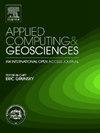3D clay microstructure synthesis using Denoising Diffusion Probabilistic Models
IF 3.2
Q2 COMPUTER SCIENCE, INTERDISCIPLINARY APPLICATIONS
引用次数: 0
Abstract
This work is concerned with the challenging task of generating 3D-consistent binary microstructures of heterogeneous clay materials. We leverage denoising diffusion probabilistic models (DDPMs) to do so and show that DDPMs outperform two classical generative adversarial networks (GANs) for a 2D generation task. Next, our experiments demonstrate that our DDPMs can produce high-quality, diverse realizations that well capture the spatial statistics of two distinct clay microstructures. Moreover, we show that DDPMs can be implicitly trained to generate porosity-conditioned samples. To the best of our knowledge, this is the first study that addresses clay microstructure generation with DDPMs.
基于去噪扩散概率模型的三维粘土微观结构综合
这项工作涉及到产生三维一致的非均质粘土材料二元微结构的挑战性任务。我们利用去噪扩散概率模型(ddpm)来做到这一点,并表明ddpm在2D生成任务中优于两个经典的生成对抗网络(gan)。接下来,我们的实验表明,我们的ddpm可以产生高质量的,多样化的实现,很好地捕获两种不同粘土微观结构的空间统计。此外,我们表明ddpm可以隐式训练来生成孔隙率条件的样本。据我们所知,这是第一个用ddpm处理粘土微观结构生成的研究。
本文章由计算机程序翻译,如有差异,请以英文原文为准。
求助全文
约1分钟内获得全文
求助全文
来源期刊

Applied Computing and Geosciences
Computer Science-General Computer Science
CiteScore
5.50
自引率
0.00%
发文量
23
审稿时长
5 weeks
 求助内容:
求助内容: 应助结果提醒方式:
应助结果提醒方式:


